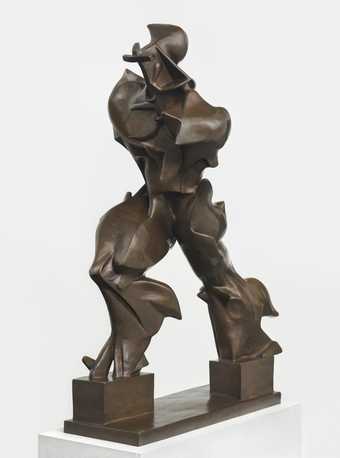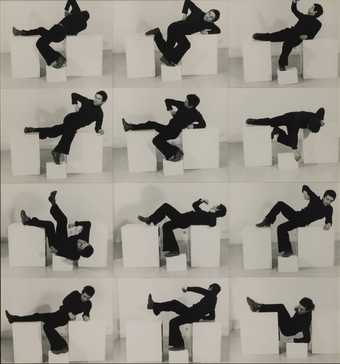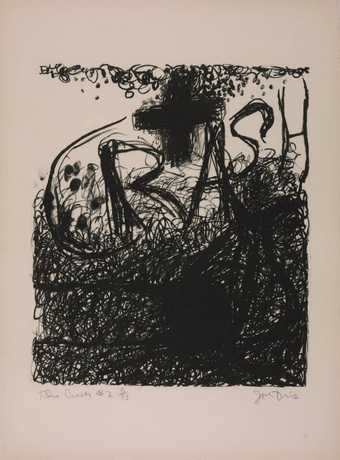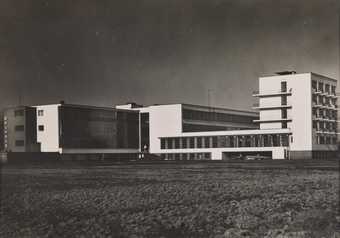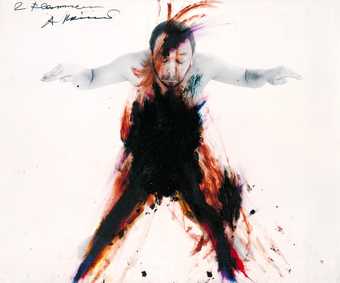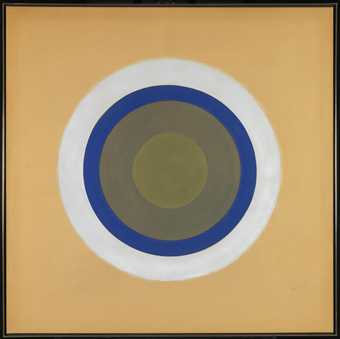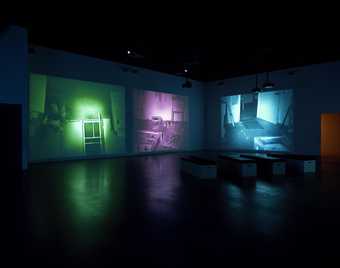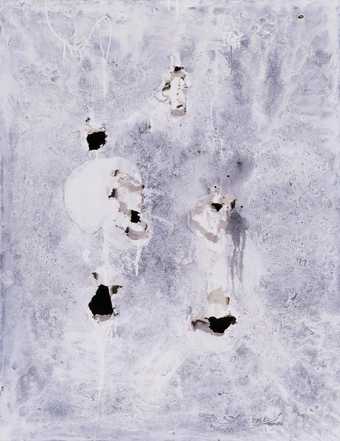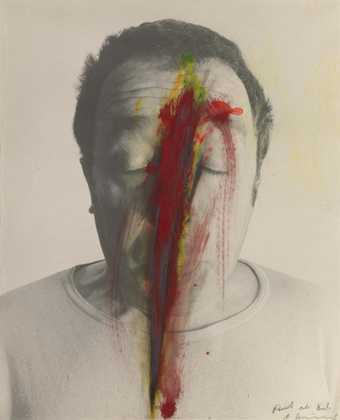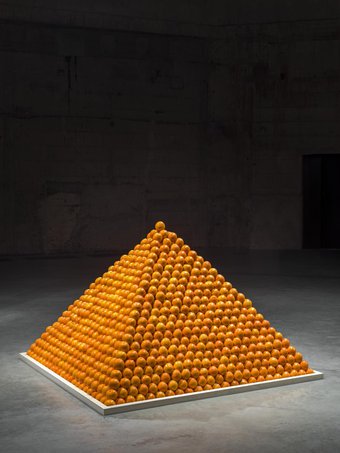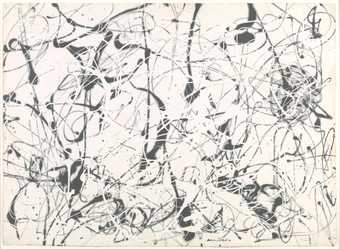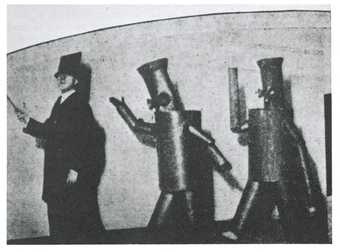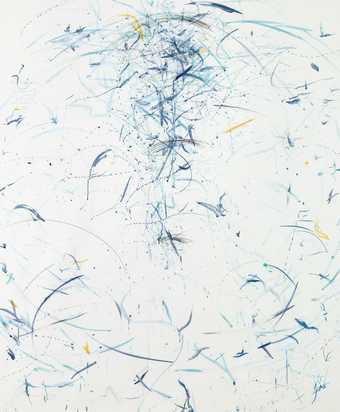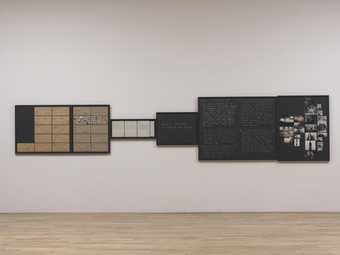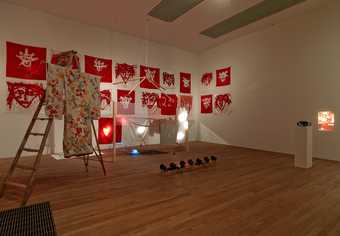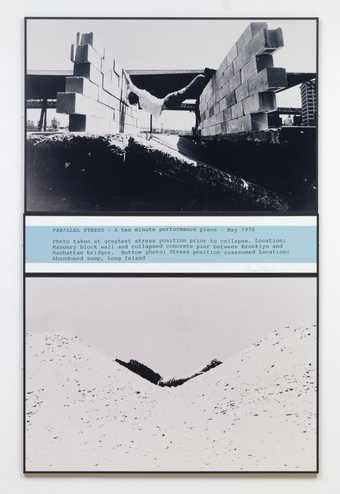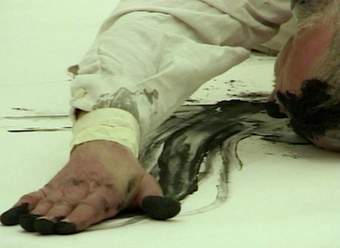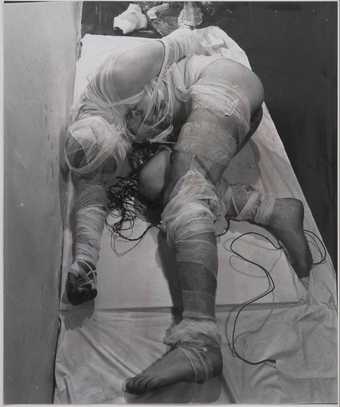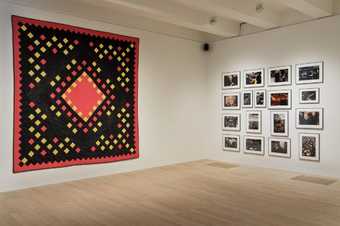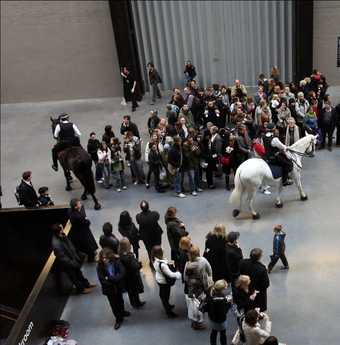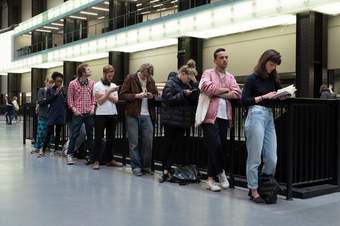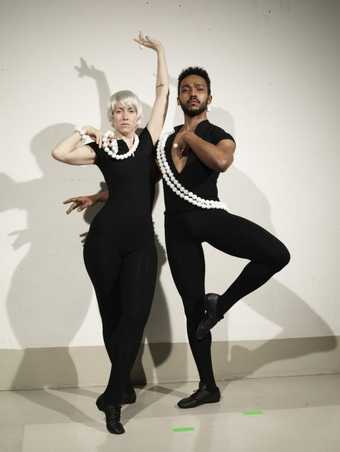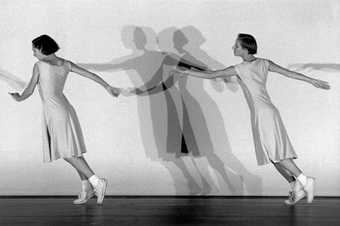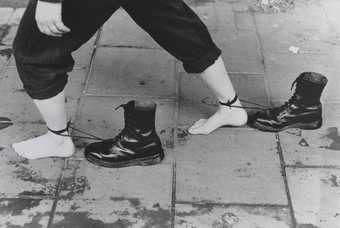
Mona Hatoum Performance Still 1985–95
Tate© Mona Hatoum
While the terms ‘performance’ and ‘performance art’ only became widely used in the 1970s, the history of performance in the visual arts is often traced back to futurist productions and dada cabarets of the 1910s.
Throughout the twentieth century performance was often seen as a non-traditional way of making art. Live-ness, physical movement and impermanence offered artists alternatives to the static permanence of painting and sculpture.
In the post-war period performance became aligned with conceptual art, because of its often immaterial nature.
Now an accepted part of the visual art world, the term has since been used to also describe film, video, photographic and installation-based artworks through which the actions of artists, performers or the audience are conveyed.
More recently, performance has been understood as a way of engaging directly with social reality, the specifics of space and the politics of identity. In 2016, theorist Jonah Westerman remarked ‘performance is not (and never was) a medium, not something that an artwork can be but rather a set of questions and concerns about how art relates to people and the wider social world’.


